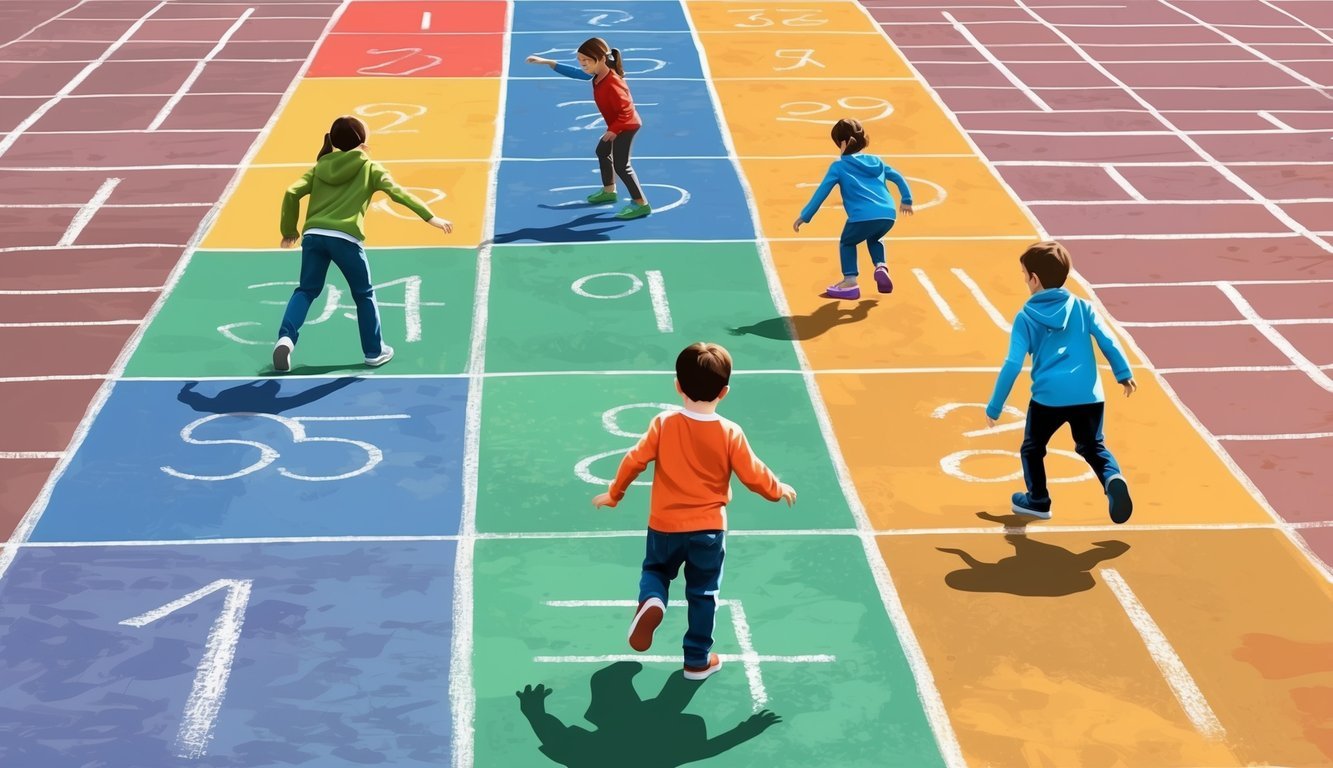Remember playing classic games as a kid? Those simple, low-tech activities still bring joy to children today.
From board games to outdoor fun, these timeless favorites offer more than just entertainment.
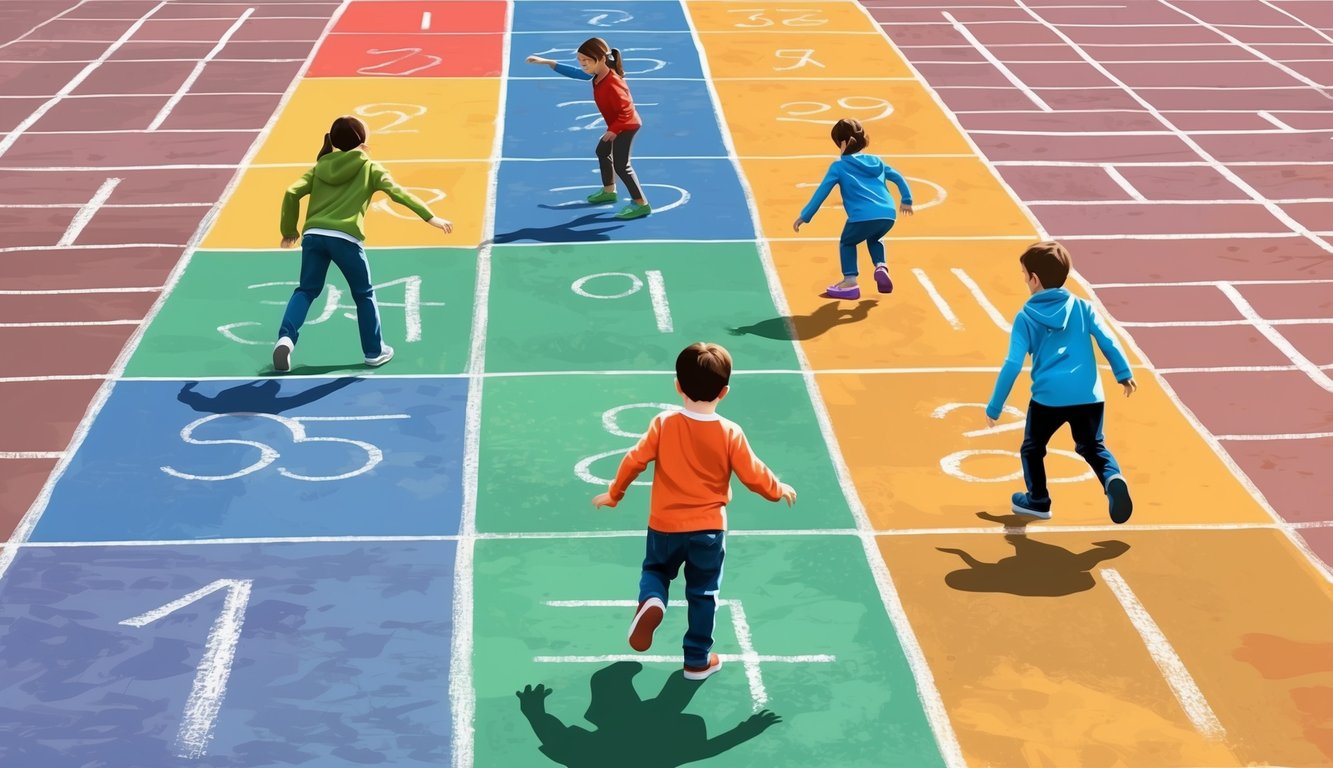
Classic kids’ games teach valuable skills like counting, strategy, and social interaction while creating lasting family memories. Whether it’s a rainy day indoors or a sunny afternoon outside, there’s a classic game for every occasion.
You might be surprised by how many of these games you already know and love.
Let’s rediscover some childhood favorites and introduce them to a new generation of kids.
Get ready to unplug, bond with your family, and have some good old-fashioned fun!
History of Classic Kids Games
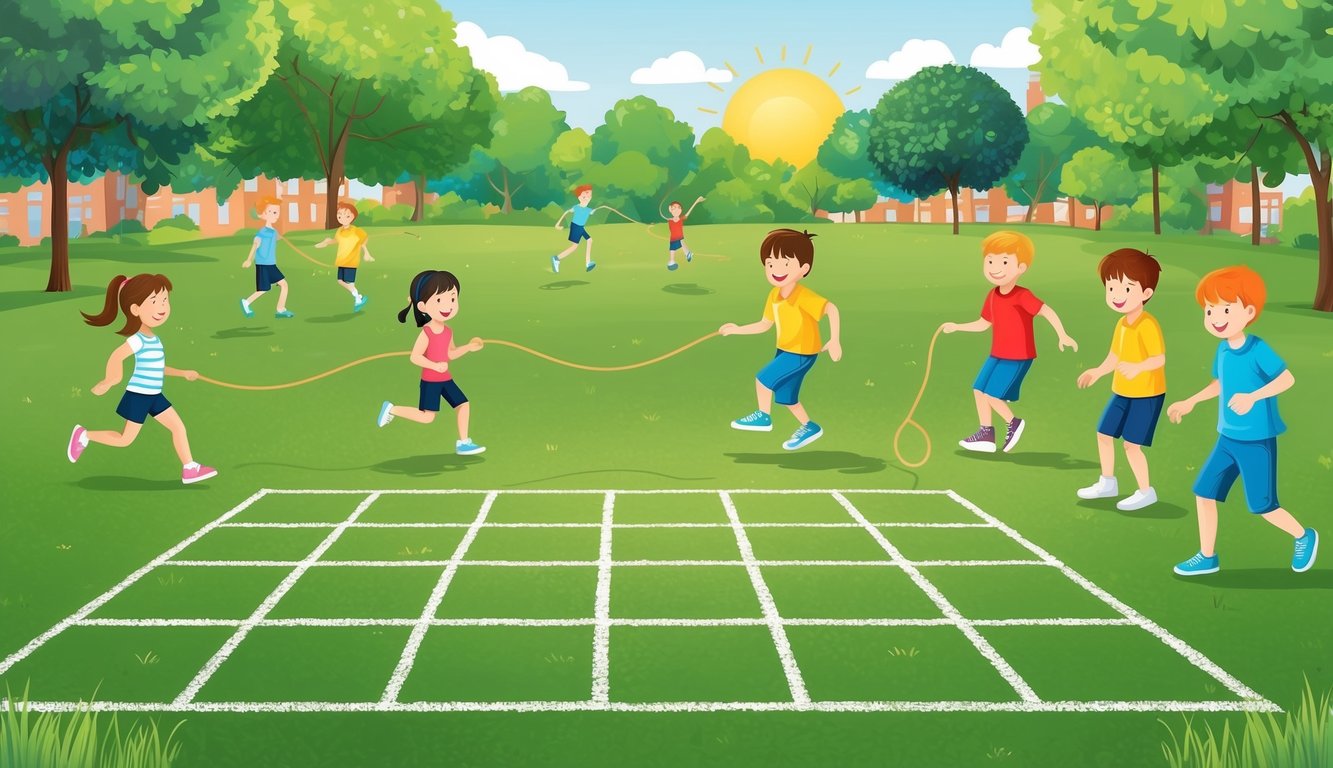
Classic kids games have entertained generations, evolving from simple outdoor activities to sophisticated board games.
Their enduring popularity stems from their ability to engage children while fostering social skills and cognitive development.
Evolution of Board Games
Board games have ancient roots, with early versions dating back thousands of years.
Chess and checkers, two enduring favorites, originated in India and Egypt respectively.
These strategy games challenged young minds and taught valuable lessons in planning and foresight.
As societies changed, so did board games.
The 19th and 20th centuries saw an explosion of family board games.
Classics like Monopoly and Scrabble emerged, combining luck and skill to create engaging experiences for all ages.
Modern board games continue to innovate, incorporating new themes and mechanics.
You’ll find games that teach history, science, and even coding concepts, making learning fun for kids.
From Outdoor to Indoor: The Transition
Traditionally, children’s games were primarily outdoor activities.
Tag, hide-and-seek, and hopscotch required nothing more than open space and a few friends.
These games promoted physical activity and social interaction.
As urban living became more common, indoor games gained popularity.
Jacks, an ancient game using small objects, transitioned easily to indoor play.
Card games like Go Fish and Old Maid became family favorites, teaching turn-taking and strategy.
The rise of television and later, video games, changed playtime habits.
However, classic indoor games like Simon Says and charades remained popular for parties and gatherings.
These games continue to offer screen-free entertainment options for kids today.
Popular Indoor Games
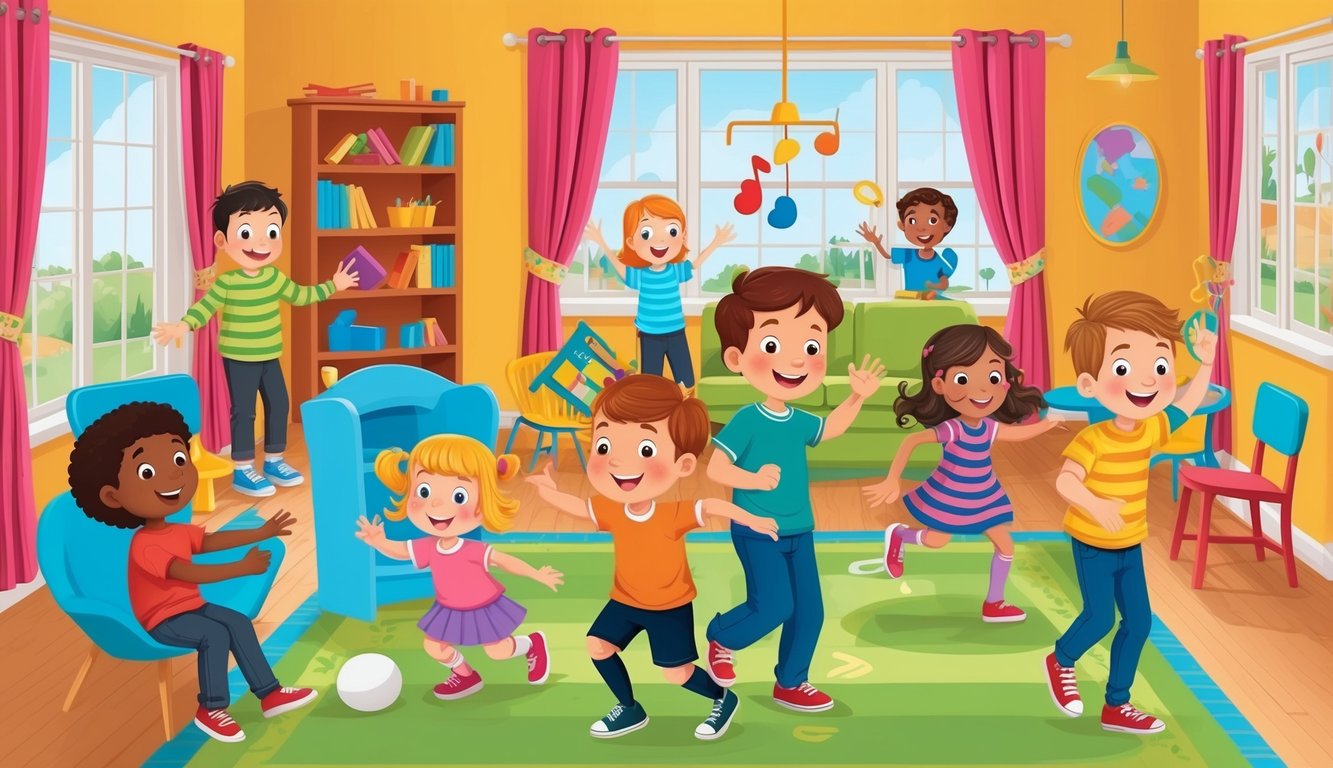
Indoor games provide endless entertainment for kids of all ages.
From classic board games to fast-paced action, there’s something for everyone to enjoy on rainy days or quiet evenings at home.
Strategic Board Games
Monopoly challenges you to become a real estate tycoon.
Build properties, collect rent, and outsmart your opponents.
Scrabble tests your vocabulary as you spell words for points.
Clue turns you into a detective solving a murder mystery.
These games sharpen strategic thinking and decision-making skills.
Try setting up a family game night to play these classics together.
You can even create themed versions with your own rules for added fun.
Fast-Paced Card and Action Games
Uno is a colorful card game where matching numbers and colors leads to victory.
Shout “Uno!” when you’re down to your last card.
Operation tests your steady hand as you remove funny ailments without setting off the buzzer.
These games are perfect for quick rounds between activities or when you need to burn some energy indoors.
They help improve reflexes and hand-eye coordination.
Cognitive Skill-Building Games
Boggle challenges you to find words in a jumbled letter grid.
Set a timer and see who can spot the most words.
Mastermind puts your deductive reasoning to the test as you crack a secret code of colored pegs.
These brain-teasers are great for boosting problem-solving skills and expanding vocabulary.
You can play them solo or compete against friends and family for added excitement.
Try rotating between different game types to keep things fresh and engage various skills.
Remember, the most important part is having fun together!
Beloved Outdoor Activities
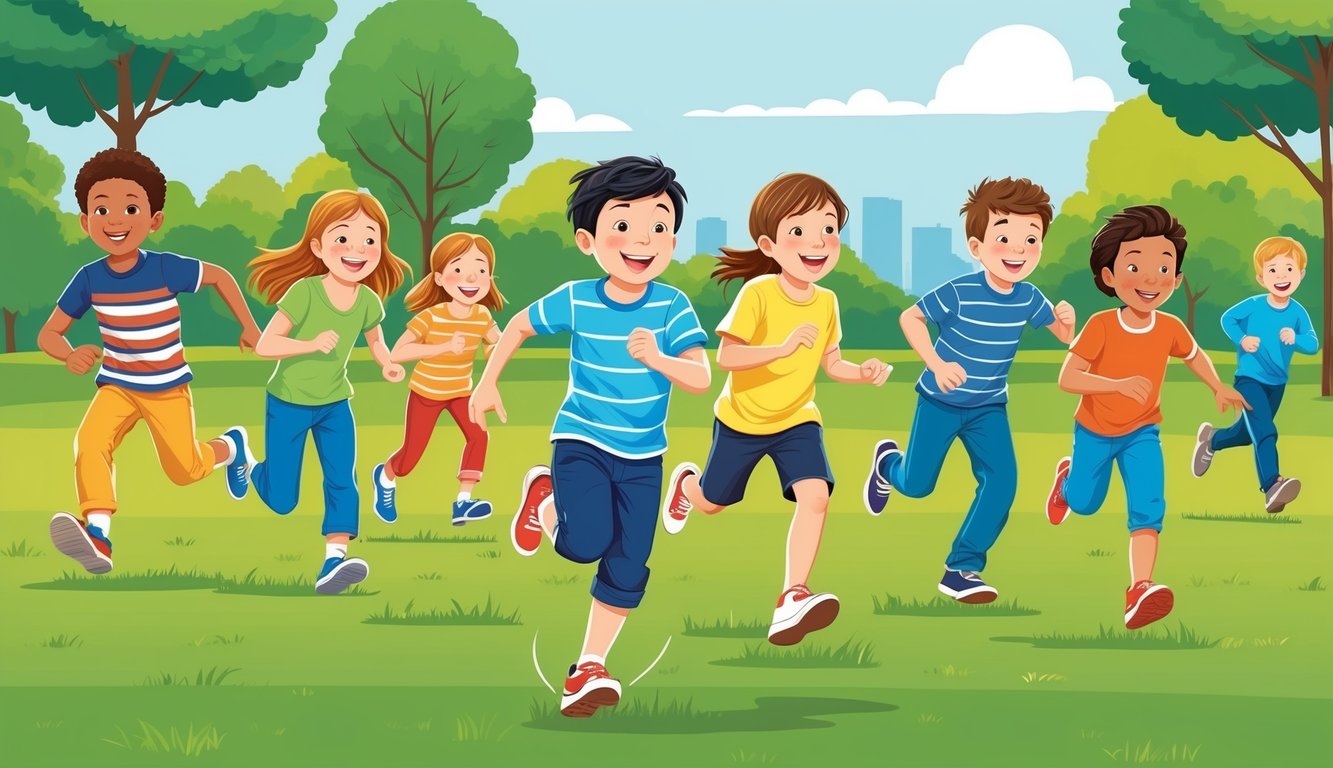
Kids love playing outside and staying active.
Classic games promote physical fitness, social skills, and endless fun.
Let’s explore some timeless favorites that get children moving and laughing.
Classic Races and Physical Challenges
Remember hopscotch? This playground staple improves balance and coordination.
Draw the court with chalk and grab a marker to toss.
Hop your way to victory!
Hide and seek never goes out of style.
One person counts while others find clever hiding spots.
It’s a thrill when you make it back to base without being spotted.
Capture the flag combines strategy and speed.
Split into teams, hide your flags, and try to snag the other team’s without getting tagged.
It’s an exciting game for larger groups.
Wheelbarrow races build strength and teamwork.
Pair up, have one person “walk” on their hands while the other holds their legs.
Race to the finish line!
Inventive Backyard Games
Three flies up is perfect for practicing hand-eye coordination.
One person throws a ball high in the air while others try to catch it.
First to snag three catches becomes the new thrower.
Kick the can blends tag, hide and seek, and strategy.
Place a can in an open area.
One person guards it while others hide.
Try to kick the can without getting tagged!
Bocce ball tests accuracy and finesse.
Roll your balls closest to the target ball.
It’s great for all ages and skill levels.
Duck, duck, goose gets everyone moving.
Sit in a circle as “it” taps heads saying “duck.” When they say “goose,” that person must chase “it” around the circle before they sit down.
Party Favorites and Family Game Night Hits
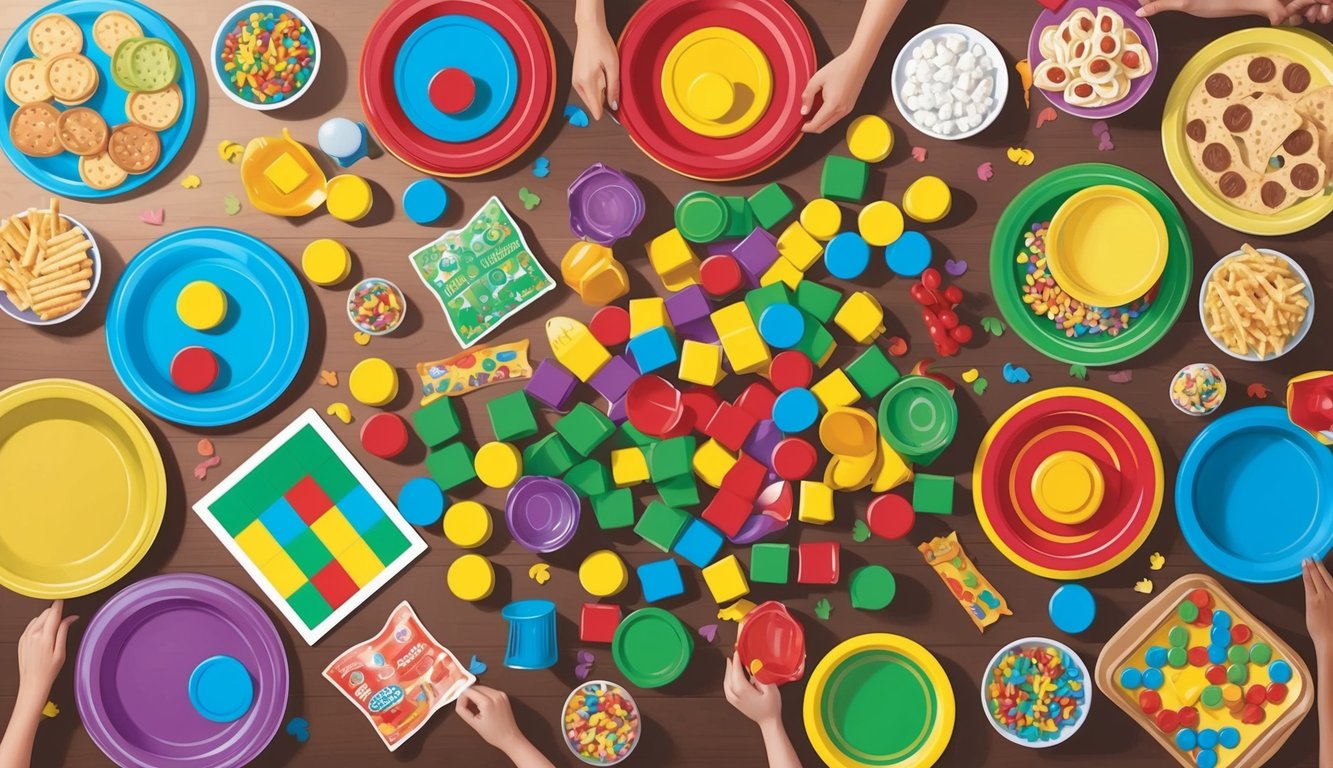
Game nights bring families and friends together for laughter and friendly competition.
From classic party games to modern board game hits, there’s something for everyone to enjoy.
Must-Have Games for any Gathering
Musical chairs is a timeless favorite that gets everyone moving.
Set up chairs in a circle, play upbeat music, and watch as players scramble for seats when the music stops.
For a quieter option, charades never fails to entertain.
Split into teams and act out words or phrases without speaking.
Hot potato adds a thrilling element of suspense.
Pass a small object around quickly as music plays, and whoever’s holding it when the music stops is out.
For birthdays, a piñata filled with candy and small toys is always a hit.
Blindfold players and let them take turns swinging at it.
Engaging Games for Group Dynamics
Trivial Pursuit tests your knowledge across various categories.
It’s perfect for a competitive family game night.
For a quicker option, try Sushi Go.
This card game is easy to learn and plays in about 15 minutes.
Apples to Apples is great for larger groups.
Players match noun cards with adjective cards for hilarious results.
If you’re looking for a team-based word game, Codenames is an excellent choice.
Two rival spymasters give one-word clues to help their team identify secret agents.
For younger kids, The Sneaky, Snacky Squirrel Game teaches colors and fine motor skills.
Players use squirrel squeezers to collect acorns.
Super Rhino Hero Battle challenges your stacking abilities as you build a wobbly cardboard skyscraper.
Classic Board Games for Younger Kids
Board games offer fun ways for young children to learn and develop important skills while bonding with family.
These timeless favorites provide entertainment and educational value for kids just starting to explore tabletop gaming.
Games to Encourage Early Skills
Candy Land helps little ones practice color recognition and following directions.
As you move your gingerbread piece along the rainbow path, you’ll encounter sweet treats and characters.
Hungry Hungry Hippos builds hand-eye coordination as you frantically mash levers to gobble up marbles.
Trouble introduces turn-taking and counting with its iconic Pop-O-Matic dice bubble.
Snakes and Ladders teaches patience and dealing with setbacks as you climb ladders and slide down snakes.
These games boost social skills like sharing and waiting your turn.
First Board Games
Simple classics like Candyland and Chutes and Ladders are perfect introductions to board gaming for preschoolers.
The straightforward gameplay and colorful designs capture young imaginations.
You’ll help develop your child’s attention span as they learn to focus on the game.
Memory matching games exercise visual recall and concentration.
Cooperative games like Hoot Owl Hoot! encourage teamwork as you work together to get owls back to their nest.
These early experiences with board games lay the foundation for more complex games as kids grow older.
Kids Games for Cognitive Development
Games can be powerful tools for boosting children’s cognitive skills.
They offer fun ways to enhance problem-solving abilities, memory, and critical thinking.
Puzzles and Problem-Solving Games
Jigsaw puzzles are great for developing spatial reasoning.
As you fit pieces together, you’re exercising visual perception and fine motor skills.
Try starting with simple puzzles and gradually increase difficulty.
“Operation” challenges hand-eye coordination and steady nerves.
It’s a blast as you carefully remove plastic pieces without setting off the buzzer.
This game sharpens focus and precision.
“Perfection” is another timed game that builds shape recognition and quick thinking.
You race to fit shapes into matching holes before time runs out and the board pops up.
“Mastermind” hones logical reasoning as you crack a color code.
It’s perfect for budding detectives and strategists.
Memory and Matching Games
Classic memory card games are simple yet effective.
Flip cards to find matching pairs, boosting visual memory and concentration.
You can even make your own with family photos or favorite characters.
“Simon” tests your ability to remember and repeat color sequences.
It’s addictive and challenges auditory and visual memory simultaneously.
“Guess Who?” sharpens observation skills and deductive reasoning.
Ask yes-or-no questions to figure out your opponent’s mystery character.
It’s a fun way to practice asking smart questions and remembering details.
Try creating a scavenger hunt around your home.
Hide objects and give clues for finding them.
This game combines memory, problem-solving, and active learning in an exciting package.
Interactive Games that Build Relationships
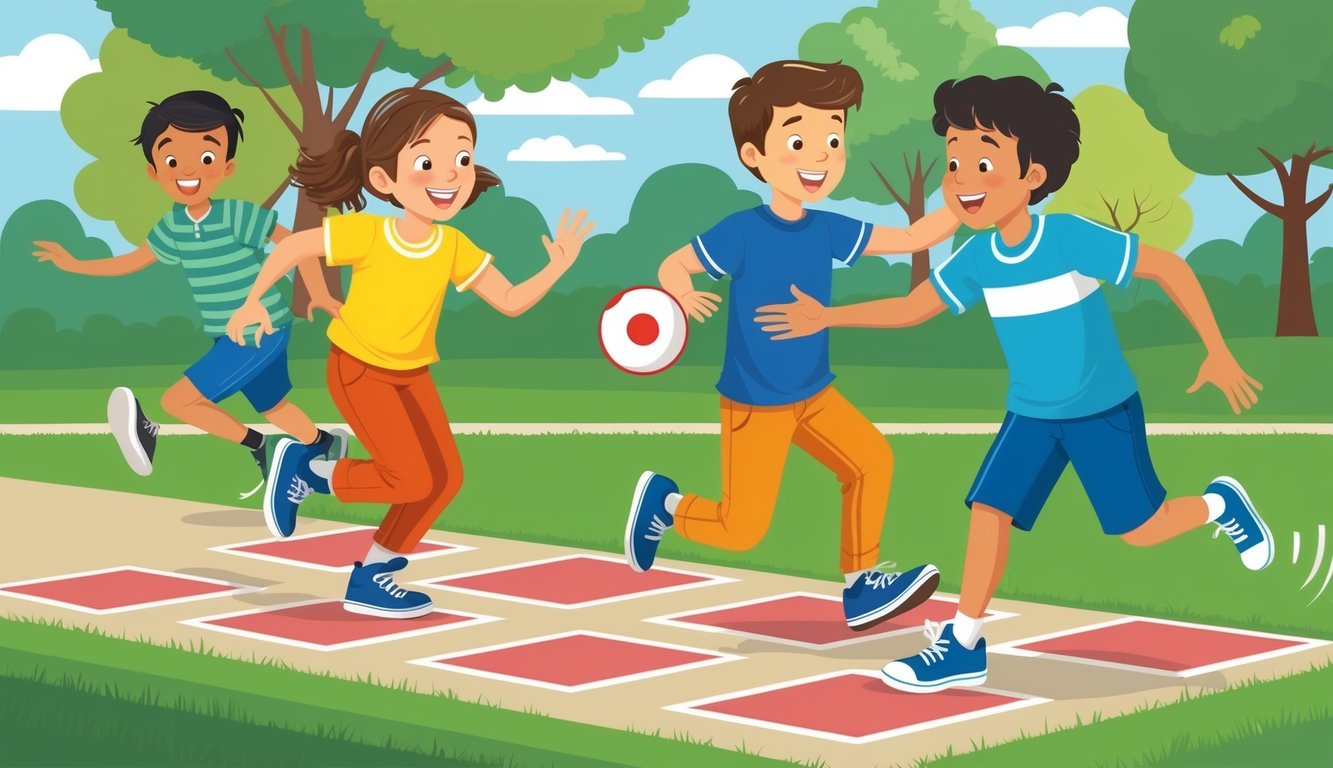
Playing together strengthens bonds and teaches important social skills.
These games foster cooperation, fairness, and teamwork among children.
Sharing and Playing Fair
Connect 4 is a great game for learning to take turns.
You and your friend can practice patience as you drop colored discs into the grid.
Piñatas teach sharing too.
When the candy spills out, everyone scrambles to grab some, but it’s important to make sure everyone gets a fair share.
Musical statues encourages good sportsmanship.
When the music stops, you freeze.
The last one moving is out, but it’s all in good fun.
Sorry! board game helps kids learn to handle setbacks gracefully.
Even when you send someone’s piece back to start, it’s just part of the game.
Games that Encourage Teamwork
Scavenger hunts are perfect for building teamwork.
You and your buddies can work together to find all the items on the list.
It’s more fun when you combine your skills and knowledge to solve clues.
Telephone is a classic game that teaches careful listening and clear communication.
You’ll need to work as a group to pass the message down the line without too many mix-ups.
Try playing board games in teams.
You can pair up for charades or Pictionary.
These games let you practice non-verbal communication and quick thinking while supporting your partner.
Innovative Takes on Traditional Games
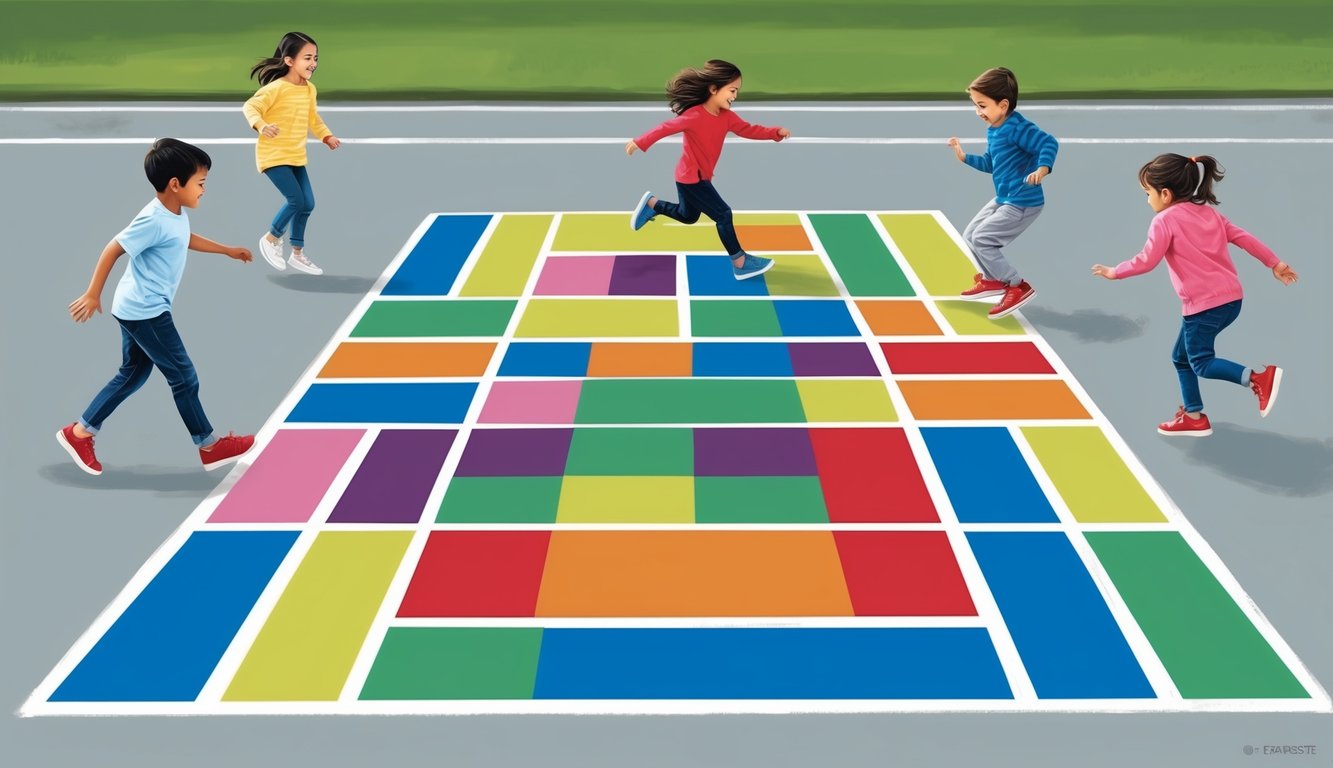
Classic kids’ games are getting fresh makeovers.
Old favorites are being reimagined with new twists, while technology is breathing new life into familiar formats.
Revitalized Classics
Remember Battleship? Now you can play it on your smartphone with friends across the globe.
The digital version adds sound effects and animations, making those “hits” even more satisfying.
Yahtzee has gone high-tech too, with apps that let you shake virtual dice.
Connect Four has gotten a supersized upgrade.
Giant versions now pop up at festivals and parties, turning the tabletop game into a full-body experience.
You’ll need to stretch to reach those top slots!
Trivial Pursuit has embraced pop culture, with editions featuring everything from Friends to Star Wars.
It’s a great way to show off your niche knowledge.
Modern Spins on Old Favorites
The Game of Life now has a card game version.
It’s faster-paced and more portable, perfect for family game nights or trips.
Ticket to Ride, while not exactly ancient, has inspired a slew of spin-offs.
You can now build train routes across Europe, Asia, or even New York City.
Each version adds unique rules to keep things fresh.
Just One puts a cooperative twist on word games.
You’ll work together to guess words, but be careful not to duplicate clues! It’s a fun challenge that brings people together.
Board game cafes are popping up everywhere, offering a chance to try these new versions without committing to a purchase.
Why not gather some friends and rediscover your childhood favorites?
Creating a Kids Game Repertoire
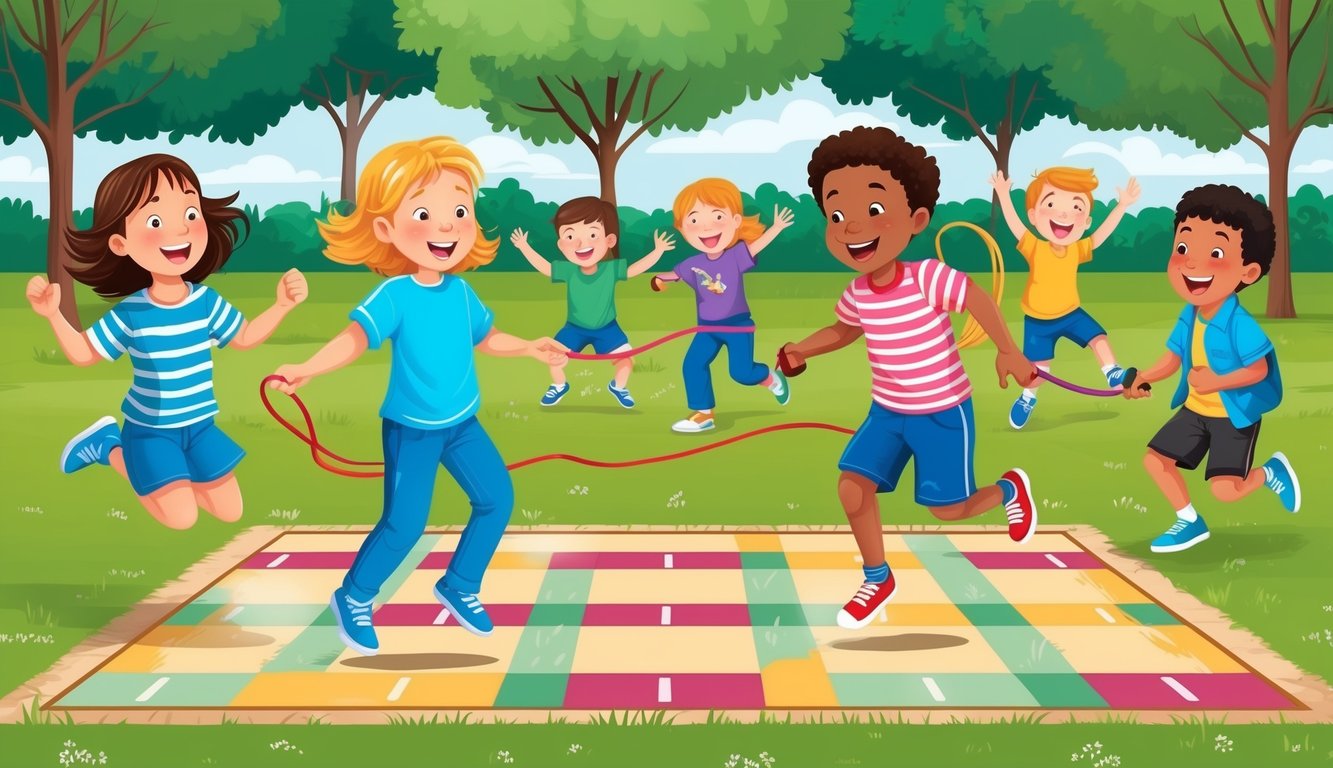
Building a collection of classic games provides endless entertainment for children.
A well-curated game closet offers variety and educational value while fostering important skills like problem-solving and social interaction.
Essential Games for Every Child’s Collection
Start with timeless favorites that appeal to a wide age range.
Tic-tac-toe is perfect for young kids learning strategy.
Checkers teaches planning and decision-making.
Uno helps with number and color recognition while being easy to learn.
For word lovers, Scrabble builds vocabulary and spelling skills.
The Game of Life introduces financial concepts in a fun way.
Jenga improves hand-eye coordination and patience.
These games are versatile, often playable by two or more people.
They’re also compact, making them ideal for travel or quick setup at home.
Curating a Diverse Game Closet
Expand your repertoire with games that target different skills.
Puzzles can boost spatial reasoning, while memory games sharpen recall.
Add cooperative games to encourage teamwork.
Consider games that get kids moving, like indoor obstacle courses or balloon volleyball.
Don’t forget classic outdoor games like hide-and-seek or tag for active play.
Rotate games to keep things fresh.
Introduce new ones gradually, mixing them with familiar favorites.
This approach maintains excitement while allowing kids to master games they enjoy.
Remember to choose age-appropriate options.
What challenges a 5-year-old might frustrate a teenager.
Keep a range of difficulty levels to accommodate growing skills and changing interests.

